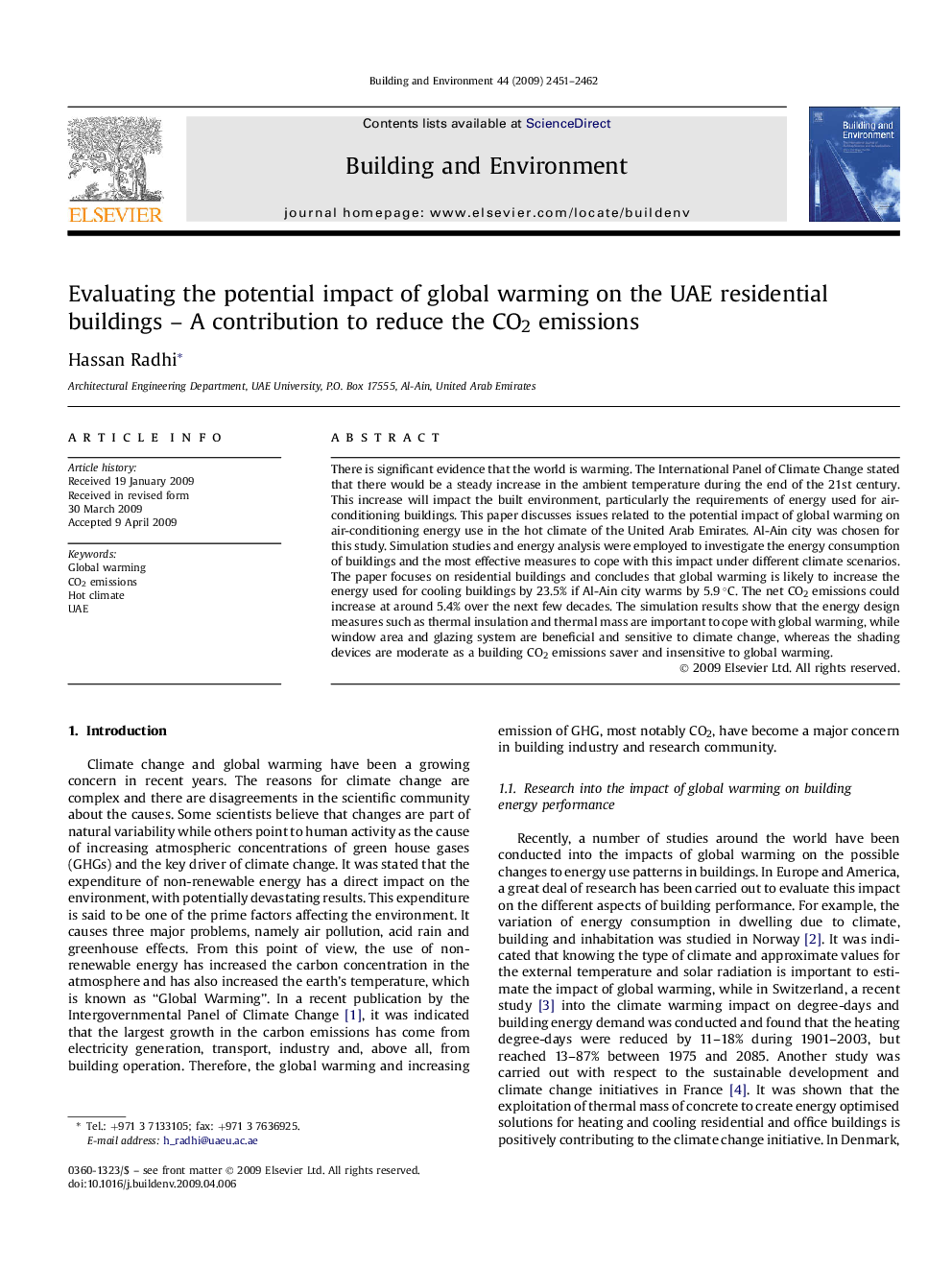| Article ID | Journal | Published Year | Pages | File Type |
|---|---|---|---|---|
| 249542 | Building and Environment | 2009 | 12 Pages |
There is significant evidence that the world is warming. The International Panel of Climate Change stated that there would be a steady increase in the ambient temperature during the end of the 21st century. This increase will impact the built environment, particularly the requirements of energy used for air-conditioning buildings. This paper discusses issues related to the potential impact of global warming on air-conditioning energy use in the hot climate of the United Arab Emirates. Al-Ain city was chosen for this study. Simulation studies and energy analysis were employed to investigate the energy consumption of buildings and the most effective measures to cope with this impact under different climate scenarios. The paper focuses on residential buildings and concludes that global warming is likely to increase the energy used for cooling buildings by 23.5% if Al-Ain city warms by 5.9 °C. The net CO2 emissions could increase at around 5.4% over the next few decades. The simulation results show that the energy design measures such as thermal insulation and thermal mass are important to cope with global warming, while window area and glazing system are beneficial and sensitive to climate change, whereas the shading devices are moderate as a building CO2 emissions saver and insensitive to global warming.
